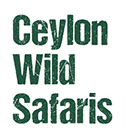Wildlife Photography Tips
Ceylon Wildsafrais has played host to many of the world's top wildlife photographers over the past 15 years. Few places in Africa can offer a photographer up close and personal encounters with Africa's wildlife like This, combined with a highly trained safari team, will ensure the very best opportunities and placement to achieve these once-in-a-lifetime shots.
Camera Bodies
Any good camera will do. One gets so close to the wildlife that even a good compact camera will achieve fantastic shots. However, if you want flexibility and the opportunity of capturing that really fantastic shot then any good quality bridge digital or 35mm DSLR (digital single lens reflex, as opposes to a compact camera with automatic controls) camera body will be needed. There are many models and makes to look at, but it's important that the camera shoots at least five frames per second so that you do not miss the action. With a compact camera there is a slight delay between pushing the trigger and the shot being captured; whereas a SLR is instant. Some of the new Canon SLR cameras offer excellent low-light capabilities giving you more opportunities when the light begins to fade.
Suggested Lens Selection
You will get extremely close to wildlife so it is not necessary to have huge lenses. A good zoom lens is your best option and will offer best flexibility.
Zoom Lenses
Fast lenses with an F stop of F4 through to F2.8 are best. Great all purpose lenses in this range are the 70-200mm f2.8, 200-400 f4 or 100-400 f5.6 lenses. With both these lenses you will have plenty on lens at all times and enough speed to keep your image nice and sharp.
Multipurpose Lenses
Most SLR bodies come with a standard lens; otherwise a lens with a 24-70mm range would be ideal to take landscape shots and general travel/ people shots.
Prime or Fixed Lenses
These are lenses that have a fixed length starting from 200mm and going up to 600mm. These are excellent lenses but very expensive and not always necessary. These lenses are wonderful in low light conditions, are very fast and offer great abrasion/shallow depths of fields giving your portrait shot that sharp look with a blurred background. However, they do tend to be heavy and need to be shot on a tripod or support of some kind.
Converters
Put in a 1.4 or 2 x converter if you can. It's always worth having and gives your lens that little more if you realty need it or if you want to take photos of birds
Support Systems
In order to get that sharp image, you need to make sure that you are shooting as fast as you can in the light offered, and most importantly you need to make sure your camera and lens are as stable as you can make them.
Clamps and Heads
On our Toyota Landcauser which especially customized for photography have large steel roll bars in front of each seat. The easiest way to get stability is using a G-clamp directly onto the bar with a good quality head. Any good ball head or video head will work. The wimberly head is one of the best and very effective, if expensive. The lodges are able to supply a G clamp and Manfrotto 501hdv head on request for a small daily hiring charge of US$150. This Head and clamp works really well especially with the bigger lenses
Tripods and Monopods
A tripod is not usable on the Land Rover itself. You will not have enough room to adjust the legs and will not get enough stability. However, in and around the lodge or for that perfect sunset shot, you could use a tripod. A monopod is very popular and works well, using the floor of the Land Rover as a base. It is still advisable to put a movable head on the end of the mono.
Bean Bags
An old favourite, the bean bag, works very well. They are easy to use and offer lots of support. The down side is that they tend to be heavy. Don't worry about bringing the filling along, as this is too heavy. The lodge will gladly offer you rice to fill the bag for your stay. Out of interest, bird seed works really well, its very light and settles well plus you can use some of the filling to feed the birds.
Flash Work
It's important to have a good flash. A third of the evening safari is at night and in near total darkness. Having a good flash or speedlight will certainly help in these conditions. There is no problem with the use of flash at all during our safaris and we would only ask for flashes not to be used when the big cats are actively hunting. Each Land Rover will have a tracker and he operates a powerful spotlight. One can easily take photos using this light as your only light source - it often creates a lovely effect!
Bags or Cases
The African bush is a dusty place so it would be a good idea to keep your camera in a bag that seals while you are on safari. It's also a good idea to not change lenses while out on safari. This will help to prevent your digital sensor being contaminated by dust particles.
Memory Cards and Storage
Bring a lot of memory with you - either a hard drive or lots of cards. There is no facility at the lodge to purchase cards and there is no way of downloading your cards either. So bring a laptop, hardrive or enough memory to last the full stay. I always take more than I expect to use. On a good safari I can easily fill up 8 gigs of memory. The more you shoot the more chance you have of getting that prize shot.

